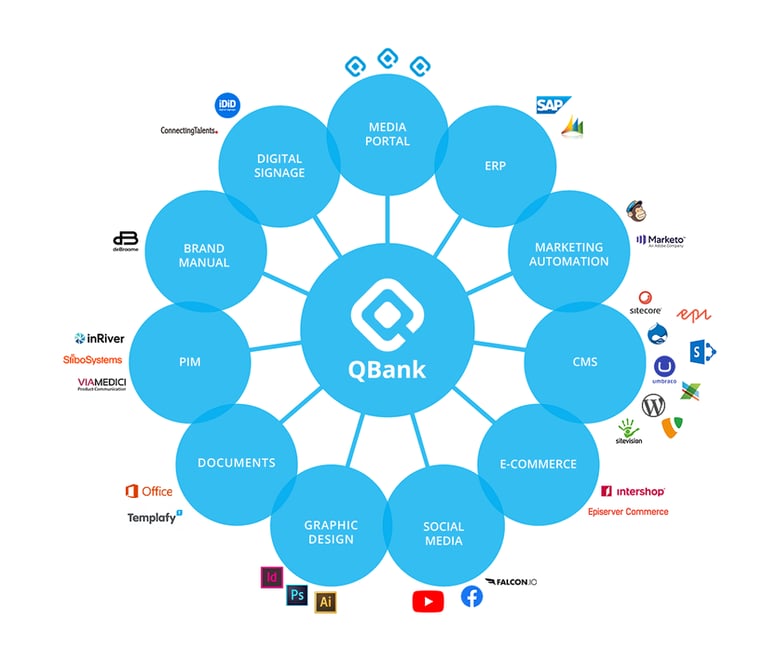You might have come to the conclusion that you need some sort of support for storing digital assets, but are you sure of what software you need? In this blog post we will address why you shouldn't confuse a Digital Asset Management with storage solutions like a file management or an image bank.
A large step in taking control of your digital assets is to identify that you aren't in control, but also that you're missing something in your Martech stack. That's when you have to dig a bit deeper and look ahead to decide what kind of software your organization require.
This blog post aims to explain how a Digital Asset Management solution is not to be confused with a file management or an image bank but have features beyond just storage. A file management like Google Drive, Dropbox or Office 365, and are great tools for storing files. A DAM also store files, so what's the difference? Storing assets in a DAM is based on metadata for tagging and organizing. The metadata is what enable features like automated workflows, statistics on usage, user and asset right management. If you are considering a simpler image bank for your images you will also get a storage solution. This might include a better overview of your images, but will lack in advanced features like collaboration, image template, automated workflows, integrations and publishing.
We have seen a rapidly increase in rich media the last couple of years, especially in video. In March this year we could see an amazing 50% increase in uploaded video in QBank. This doesn't seem to be decreasing any time soon and will put great demands on video marketing efforts ahead. Facing higher demands and producing more content is the reality of many marketing and communications teams out there and the need of working lean and efficient is a must.
DAM – turning assets INto content
QBank Digital Asset Management solution meet the DAM Foundation's ten core characteristics of a DAM. Here are a few features and areas in which the DAM solution stands out from any other storage-only solution.
Collaboration
One of many strengths of a DAM is that it’s great for many users. As you know there can be a lot of stakeholders involved in a marketing campaign or in the making of an ad. Maybe you have a designer, a copywriter, a coordinator, a web editor, an ad agency.... You get the picture, there could be a lot of people working together on one single ad. What you need is for them all to get a long and being able to collaborate. With a DAM solution you have great tools to manage this, such as:
Moodboards - External websites where you can share assets with external stakeholders, available for uploading as well as downloading. This means that your external ad agency can upload content to a Moodboard, and it will automatically be uploaded in your DAM (pending and awaiting your approval). The same goes for when you need to send your agency blueprints or sketches, send it in a Moodboard.
Comments – Leave comments to your coworkers or other stakeholders on specific assets. Great for correctional and proof reading.
Version control – Keep track of which version is the latest, while you have access to the history and older versions.
Grouping - Group assets that are in relations to one another and you will always keep them together. Perfect for logos, ads or campaign related assets.
Managing tools
When working in a DAM you only need to upload the largest versions of your images, and by setting up predetermined templates, after specific size and resolution, you don’t need to open your images in photoshop to adjust them. By a simple click you’ll have the system doing that for you. This is particularly great if you are publishing a lot of material to a website or social media, and you use the same size on your images.
If you are working with a video instead there are templates to add outros or logotypes to your videos. A great tool if you’re operational on multiple markets and communicating in different languages.
Smart folders will support you when working with marketing campaigns, setting the accurate assets for a specific campaign within a selected time frame. For example, you might wish to use a Christmas version of your logo or ads during the holiday and change back on a specific date.
By setting up advanced workflows you can run your content production more efficiently. By setting up integrations to your current communications tools you can import and export digital assets automatically.
Publishing
When it comes to publishing a Digital Asset Management really dominates. From a Marketer’s point of view, this is almost poetic. By drag-and-drop you push your content to multiple publishing channels, like CMS's or social media. QBank has an open API which will enable you to integrate with a lot of systems and enable even more publishing channels.

Learn more
If you are intrigued to learn more about QBank and DAM, download our whitepaper "What is Digital Asset Management?".
